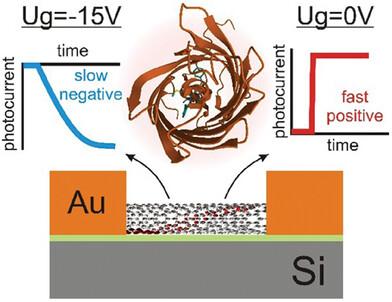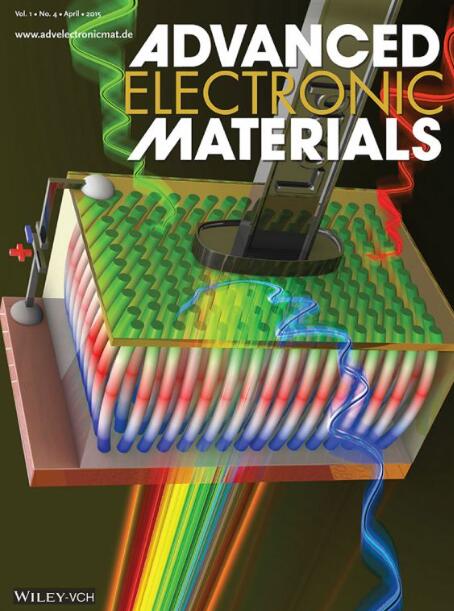Gate-Controlled Photoresponse in an Individual Single-Walled Carbon Nanotube Modified with a Fluorescent Protein
IF 5.3
2区 材料科学
Q2 MATERIALS SCIENCE, MULTIDISCIPLINARY
引用次数: 0
Abstract
Bionanohybrids of carbon nanotubes and fluorescent proteins (FPs) are a promising class of materials for optoelectronic applications. Understanding and controlling the charge transport mechanism between FPs and carbon nanotubes are critical to achieving functional reproducibility and exploring novel synergetic effects. This work demonstrates a novel phenomenon of photocurrent generation in field-effect transistors based on the conjugation of an individual single-walled carbon nanotube (SWCNT) and FPs. When studying the effect of gate voltage on the photoresponse, reversible switching from fast positive to a slow negative photoresponse in bionanohybrids associated with depletion and accumulation modes, respectively is observed. The latter demonstrates a stable memory effect after the light is turned off. It is revealed that in depletion mode, the charge carriers from the protein are not trapped at the interface due to effective screening by the gate potential. It is suggested that the main mechanism in photoresponse switching is a competitive effect between photogating and effective photodoping of the SWCNT by charges trapped at the nanotube interface. The noticeable effect of water molecules can support proton transfer as the main mechanism of charge transfer. This result illustrates that SWCNT/FP bionanohybrids bear great potential for the realization of novel optoelectronic devices.

用荧光蛋白修饰的单根单壁碳纳米管中的门控光响应
碳纳米管和荧光蛋白(FPs)的仿生混合体是一类很有前途的光电应用材料。了解和控制荧光蛋白与碳纳米管之间的电荷传输机制对于实现功能再现和探索新的协同效应至关重要。这项工作展示了一种基于单根单壁碳纳米管(SWCNT)和FPs共轭的场效应晶体管中产生光电流的新现象。在研究栅极电压对光电响应的影响时,观察到仿生混合体中的光电响应从快速正向到缓慢负向的可逆转换,分别与耗尽模式和累积模式有关。后者在关灯后显示出稳定的记忆效应。研究表明,在耗尽模式下,由于栅极电位的有效屏蔽,来自蛋白质的电荷载流子不会被困在界面上。这表明,光响应切换的主要机制是纳米管界面上被截留的电荷对 SWCNT 的光ogating 和有效光掺杂之间的竞争效应。水分子的显著效应支持质子转移成为电荷转移的主要机制。这一结果表明,SWCNT/FP 仿生杂化在实现新型光电器件方面具有巨大潜力。
本文章由计算机程序翻译,如有差异,请以英文原文为准。
求助全文
约1分钟内获得全文
求助全文
来源期刊

Advanced Electronic Materials
NANOSCIENCE & NANOTECHNOLOGYMATERIALS SCIE-MATERIALS SCIENCE, MULTIDISCIPLINARY
CiteScore
11.00
自引率
3.20%
发文量
433
期刊介绍:
Advanced Electronic Materials is an interdisciplinary forum for peer-reviewed, high-quality, high-impact research in the fields of materials science, physics, and engineering of electronic and magnetic materials. It includes research on physics and physical properties of electronic and magnetic materials, spintronics, electronics, device physics and engineering, micro- and nano-electromechanical systems, and organic electronics, in addition to fundamental research.
 求助内容:
求助内容: 应助结果提醒方式:
应助结果提醒方式:


